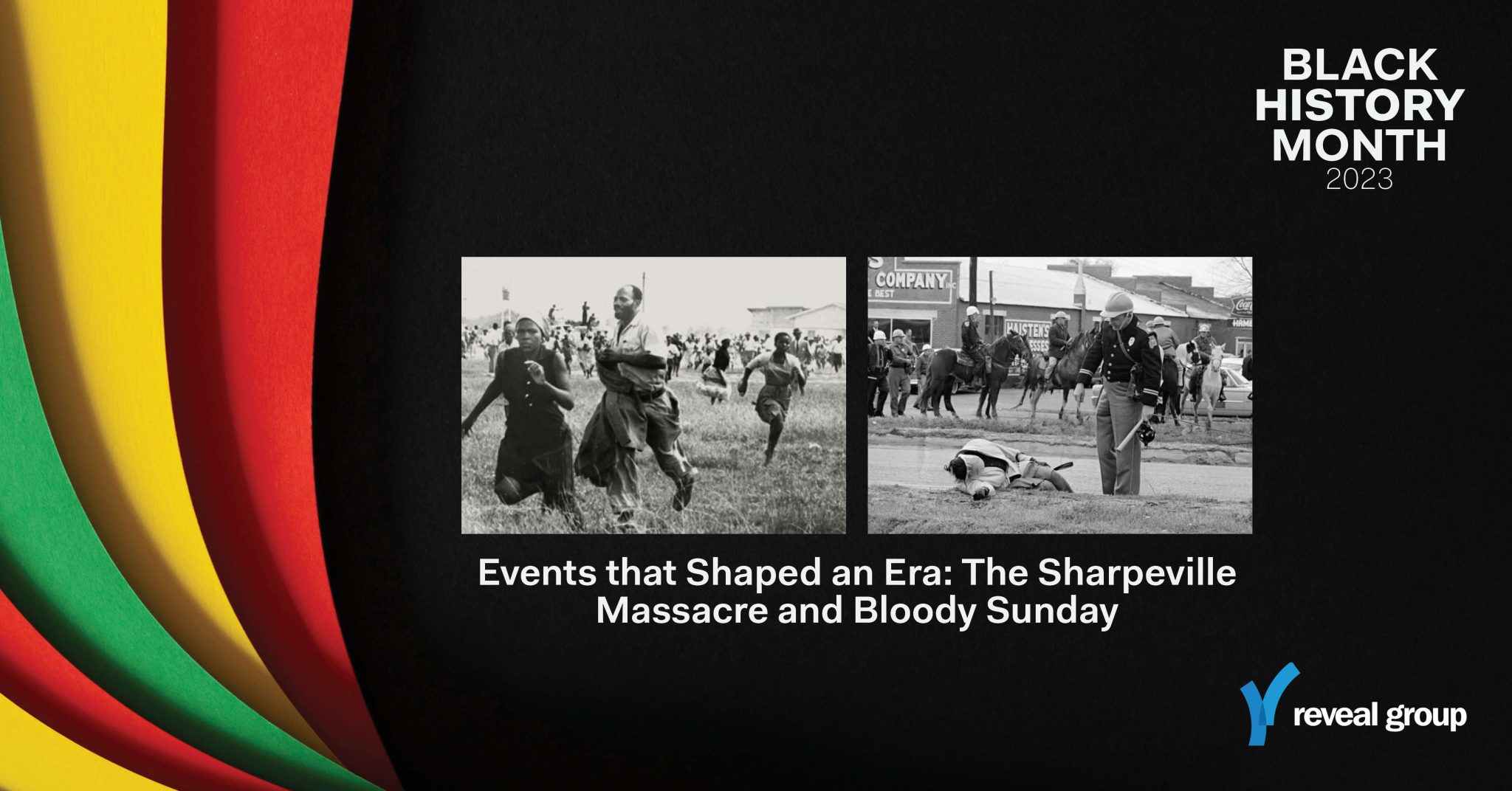
Black History Month 2023: Events that Shaped an Era – The Sharpeville Massacre and Bloody Sunday
It’s sometimes unfathomable to believe that acts of racial adversity took place in countries thousands of miles apart around the same time. Many events took place during the early 1960s that significantly impacted black history, but two occasions, in particular, deserve more attention. This blog will cover the Sharpeville Massacre in South Africa in 1960 and Bloody Sunday in the United States in 1965, two parallel acts of injustice that shaped an era.
The Sharpeville Massacre – Sharpeville, South Africa
The Sharpeville massacre was a pivotal moment in the struggle against apartheid in South Africa. On March 21, 1960, a peaceful demonstration was held in the township of Sharpeville, near Johannesburg, to protest the pass laws, which required black South Africans to carry passbooks and subjected them to frequent identity checks by the police.
The demonstration was peaceful until the police arrived and, without warning, opened fire on the crowd. In the end, 69 people were killed and over 180 were injured. The Sharpeville massacre was widely condemned by the international community and galvanized opposition to apartheid inside and outside South Africa.
The Sharpeville massacre remains a powerful symbol of the struggle for human rights and against racial oppression in South Africa. The massacre profoundly impacted the anti-apartheid movement, leading to increased international isolation of the South African government and increased political and economic pressure on the apartheid regime. It also heralded a transformation in the struggle against apartheid, with many activists shifting from passive resistance to more militant forms of protest in response to the government’s brutal crackdown.
Bloody Sunday – Selma, Alabama
On March 7, 1965, in Selma, Alabama, a 600-person civil rights demonstration ended in violence when marchers were attacked and beaten by white state troopers and sheriff’s deputies. The day’s events became known as “Bloody Sunday.”
The demonstrators—led by civil rights activists John Lewis of the Student Nonviolent Coordinating Committee and Hosea Williams of the Southern Christian Leadership Conference—were commemorating the recent fatal shooting of Jimmie Lee Jackson, a 26-year-old church deacon, by state trooper James Bonard Fowler. The group planned to march 54 miles from Selma to Montgomery, the state capital. Just as they crossed the Edmund Pettus Bridge outside Selma, they were ordered to disperse. Moments later, police assaulted them with tear gas, bullwhips, and billy clubs. Lewis, then 25, was one of 17 marchers hospitalized; dozens more were treated for injuries.
The violence was broadcast on TV and recounted in newspapers, spurring demonstrations in 80 cities nationwide within days. On March 9, Martin Luther King, Jr. led more than 2,000 marchers to the Edmund Pettus Bridge. On March 15, President Lyndon B. Johnson spoke on the need for voting reform, something activists in Selma had long been fighting for: “There is no issue of states’ rights or national rights. There is only the struggle for human rights. We have already waited 100 years and more, and the time for waiting is gone.” King completed the march to Montgomery, along with 25,000 demonstrators, on March 25, under the protection of the U.S. military and the FBI. The route is now a U.S. National Historic Trail. Prodded by what Johnson called “the outrage of Selma,” the Voting Rights Act of 1965 was signed into law five months later, with the purpose to “right that wrong.”


